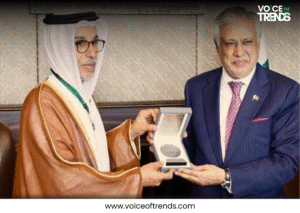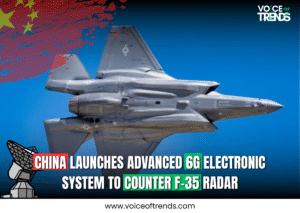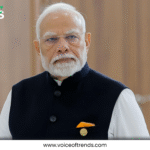On May 20, 2025, President Donald Trump unveiled an ambitious initiative called the ‘Golden Dome,’ a cutting-edge missile defense system aimed at shielding the United States against emerging and sophisticated missile threats. This $175 billion initiative, inspired by Israel’s Iron Dome but far more expansive, aims to create a multilayered shield incorporating space-based sensors and interceptors to counter ballistic, hypersonic, and cruise missiles. Here’s an in-depth look at the proposal, its implications, and the challenges it faces.
Table of Contents
ToggleA Vision for National Security
The Golden Dome initiative stands as a central element of Trump’s proposed defense policy for a potential second term, focusing on shielding the nation from advanced missile attacks posed by countries including those in East Asia and the Middle East, such as China, Russia, Iran, and North Korea. During a briefing in the Oval Office with Defense Secretary Pete Hegseth, Trump detailed a multi-layered defense system designed to operate across land, sea, and space, capable of intercepting missiles during any phase of their flight. before launch, during early flight, midcourse, or descent. He claimed the system would be fully operational by the end of his term in 2029, a timeline that has sparked both excitement and skepticism.
The announcement included striking visuals, with posters depicting a golden ring encircling the U.S. and the phrase “Golden Dome for America.” Trump emphasized that the system would safeguard the homeland and position the U.S. as a leader in missile defense technology, drawing parallels to Ronald Reagan’s Strategic Defense Initiative, often dubbed “Star Wars,” from the 1980s.
Key Features of the Golden Dome
The Golden Dome is designed as an all-encompassing defense system made up of multiple vital elements:
Space-Based Interceptors and Sensors: A constellation of potentially thousands of satellites would detect and track missile launches, with some capable of intercepting threats shortly after launch. This marks the first time the U.S. Aims to deploy space-based defense systems to intercept potential missile attacks.
Integration with Existing Systems: The system will incorporate current U.S. missile defense assets, such as Patriot missile batteries, the Ground-Based Midcourse Defense (GMD) system, and Aegis Ashore infrastructure.
Countering Advanced Threats: The Golden Dome aims to neutralize hypersonic missiles, intercontinental ballistic missiles (ICBMs), and drones, whether conventional or nuclear, addressing vulnerabilities highlighted by the Defense Intelligence Agency.
Centralized Command: Led by U.S. Space Force General Michael Guetlein, the project will operate under a unified command structure to streamline development and deployment.
Trump appointed General Guetlein, the vice chief of space operations, to oversee the project, citing his expertise in missile warning technology and defense procurement. The initiative also has economic implications, with states like Alaska, Florida, Georgia, and Indiana expected to benefit from manufacturing and development contracts.
Financial and Political Landscape
Trump estimated the Golden Dome’s cost at $175 billion, with an initial $25 billion included in a proposed tax and spending bill currently under consideration in Congress. However, the Congressional Budget Office (CBO) estimates that the space-based components alone could cost between $161 billion and $831 billion over 20 years, raising concerns about the project’s affordability. Republican lawmakers, including Senator Roger Wicker, have pledged support, with a proposed $25 billion “down payment” in an upcoming spending bill. Meanwhile, Democrats, such as Senator Jack Reed, have criticized the plan as a potential “slush fund” lacking clear objectives.
The project’s funding remains uncertain, tied to a contentious reconciliation bill that includes significant tax cuts and defense spending increases. Trump voiced optimism about gaining support from Congress, remarking that promising to protect lives in a chaotic world makes approval seem straightforward. However, the massive price tag and long-term costs have sparked debate about diverting resources from other national priorities, such as modernizing aging intercontinental ballistic missiles.
Technological and Strategic Challenges
The Golden Dome’s ambitious scope draws comparisons to Reagan’s Star Wars program, which was abandoned due to technological and financial constraints. Experts are divided on its feasibility:
Technological Hurdles: Building a network of thousands of satellites capable of detecting and intercepting missiles requires significant advancements in space-based technology. While companies like SpaceX have demonstrated the ability to deploy large satellite constellations (e.g., Starlink), adapting this for missile defense is uncharted territory.
Strategic Implications: Proponents, like Tom Karako of the Center for Strategic and International Studies, argue that the Golden Dome could deter conventional and nuclear conflicts by raising the threshold for adversaries. However, critics, including Chinese officials, warn that it could escalate global tensions and trigger an arms race, with China’s Foreign Ministry spokesperson Mao Ning calling it a move toward “space militarization.”
Scale and Complexity: Unlike Israel’s Iron Dome, which protects a smaller, flatter terrain against short-range threats, the Golden Dome must cover a landmass over 400 times larger, facing faster, more powerful ICBMs and hypersonic missiles.
Defense contractors like Lockheed Martin, L3Harris Technologies, and RTX are positioning themselves for contracts, with SpaceX, Anduril, and Palantir also vying for roles. However, concerns about conflicts of interest, particularly involving Elon Musk’s SpaceX, have prompted calls from 42 Democratic lawmakers for an investigation into the contract-awarding process.
International Collaboration and Criticism
Trump noted that Canada has expressed interest in joining the Golden Dome initiative, with discussions underway for a new security and economic partnership. Canadian Prime Minister Mark Carney’s office confirmed talks to strengthen NORAD and related initiatives, suggesting potential cost-sharing. However, the lack of concrete details on Canada’s role raises questions about the project’s international scope.
Internationally, the proposal has drawn sharp criticism. China condemned the Golden Dome, arguing it could destabilize global security. Arms control advocates echo this concern, warning that a robust U.S. missile shield might prompt adversaries to develop deadlier weapons to counter it.
A Bold but Uncertain Future
The Golden Dome represents a transformative vision for the U.S. Protecting the nation by utilizing advanced technology to counter modern missile threats. Its proponents see it as a necessary evolution in a world where adversaries wield increasingly sophisticated weapons. However, its ambitious timeline, staggering costs, and geopolitical ramifications have sparked intense debate.
As the Pentagon continues to shape the system’s specifications and lawmakers deliberate over its budget, the future of the Golden Dome will depend on advancements in technology, strong political backing, and global collaboration. Whether this ambitious project materializes by 2029 or fades into history like other unfulfilled defense initiatives remains uncertain. For now, Trump’s “big, beautiful” missile shield is a bold statement of intent, but its path forward is fraught with challenges.




















